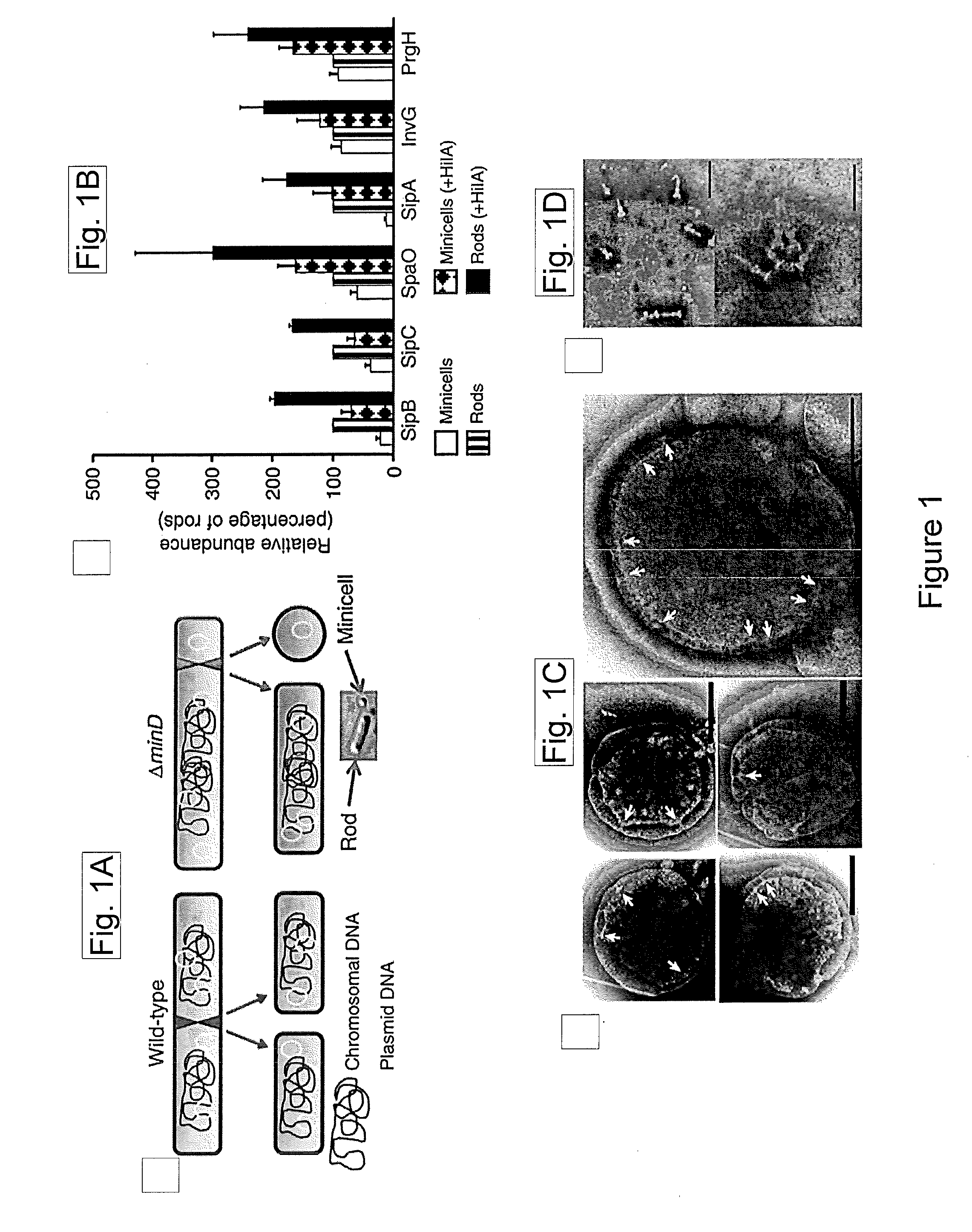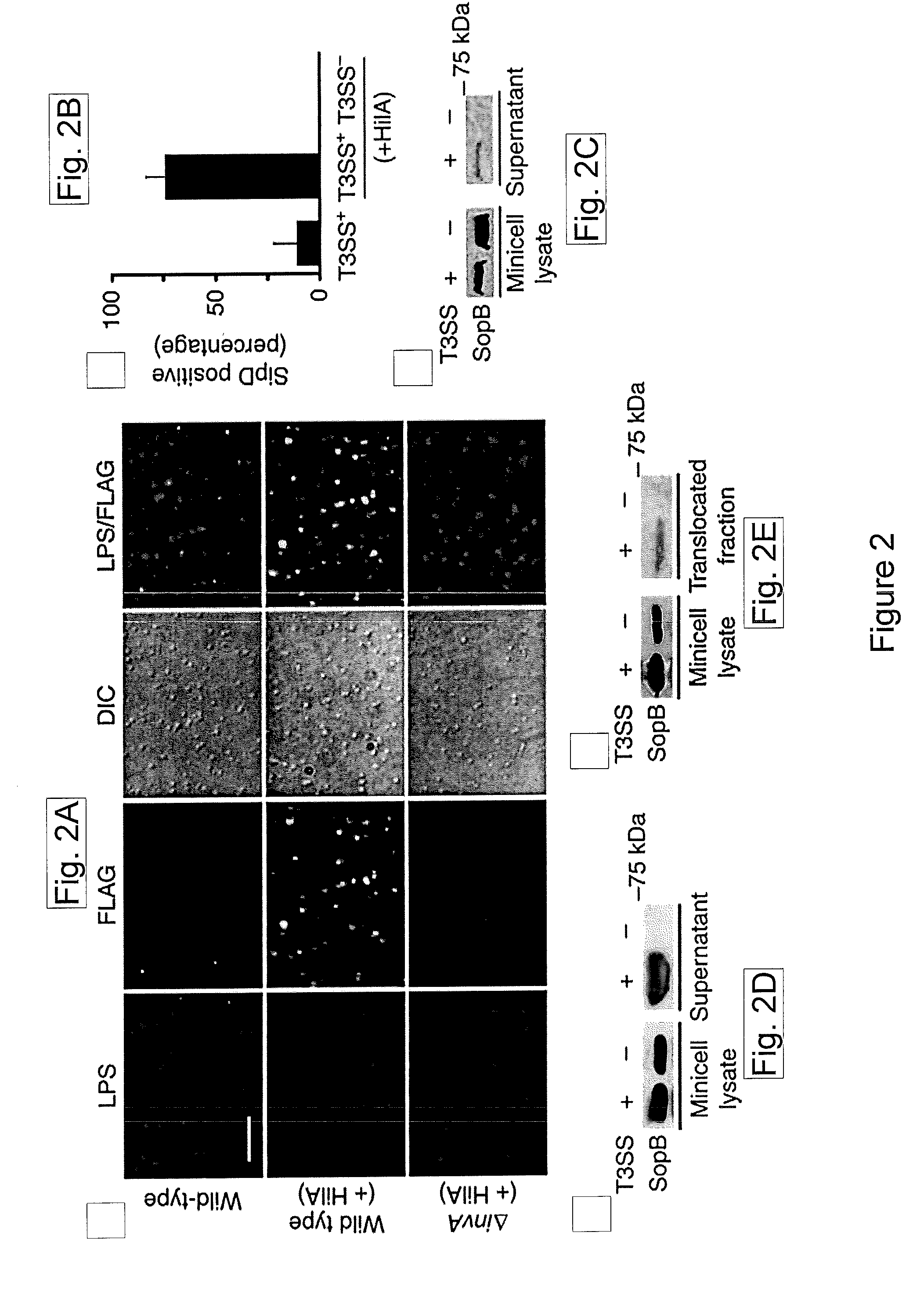Non-Replicating Bacterial Nanoparticle Delivery System and Methods of Use
a delivery system and nanoparticle technology, applied in the field of non-replicating bacterial nanoparticle delivery system and methods of use, can solve the problems of limiting the use of virulence-attenuated bacterial vaccine systems in certain populations, inefficient capacity of cytotoxic t cell responses of bacteria, and inability to stimulate cytotoxic t cell responses
- Summary
- Abstract
- Description
- Claims
- Application Information
AI Technical Summary
Benefits of technology
Problems solved by technology
Method used
Image
Examples
experimental examples
[0141]The invention is further described in detail by reference to the following experimental examples. These examples are provided for purposes of illustration only, and are not intended to be limiting unless otherwise specified. Thus, the invention should in no way be construed as being limited to the following examples, but rather, should be construed to encompass any and all variations which become evident as a result of the teaching provided herein.
[0142]Without further description, it is believed that one of ordinary skill in the art can, using the preceding description and the following illustrative examples, make and utilize the present invention and practice the claimed methods. The following working examples therefore, specifically point out the preferred embodiments of the present invention, and are not to be construed as limiting in any way the remainder of the disclosure.
example 1
Engineering the Type III Secretion System in Non-Replicating Bacterial Minicells for Antigen Delivery
[0143]Type III protein secretion systems are being considered for vaccine development since virtually any protein antigen can be engineered for delivery by these nanomachines into the class I antigen presentation pathway to stimulate antigen-specific CD8+ T cells (Russmann et al., 1998, Science, 281: 565-568; Chen et al., 2006, Infect Immun, 74: 5826-5833). However, a limitation in the use of these prior systems is that they requires live virulence-attenuated bacteria, which may preclude its use in certain populations such as children and the immunocompromised.
[0144]To overcome some of the limitations of virulence-attenuated bacterial antigen delivery vectors while retaining some of its benefits, it was sought to engineer the T3SS in a non-replicating antigen-delivery system. As an alternative to a synthetic system, the present studies demonstrate a strategy to engineer bacterial min...
PUM
| Property | Measurement | Unit |
|---|---|---|
| Disorder | aaaaa | aaaaa |
Abstract
Description
Claims
Application Information
 Login to View More
Login to View More - R&D
- Intellectual Property
- Life Sciences
- Materials
- Tech Scout
- Unparalleled Data Quality
- Higher Quality Content
- 60% Fewer Hallucinations
Browse by: Latest US Patents, China's latest patents, Technical Efficacy Thesaurus, Application Domain, Technology Topic, Popular Technical Reports.
© 2025 PatSnap. All rights reserved.Legal|Privacy policy|Modern Slavery Act Transparency Statement|Sitemap|About US| Contact US: help@patsnap.com



